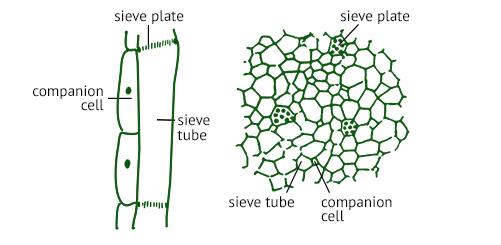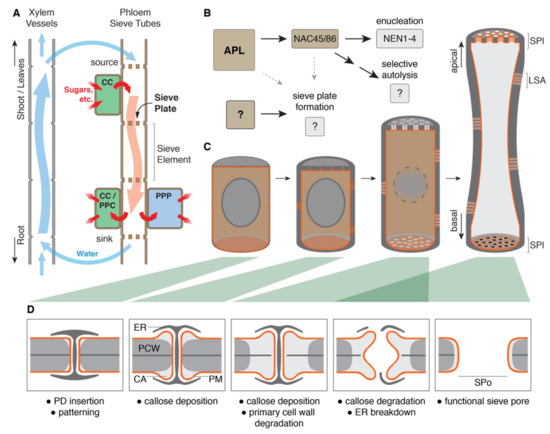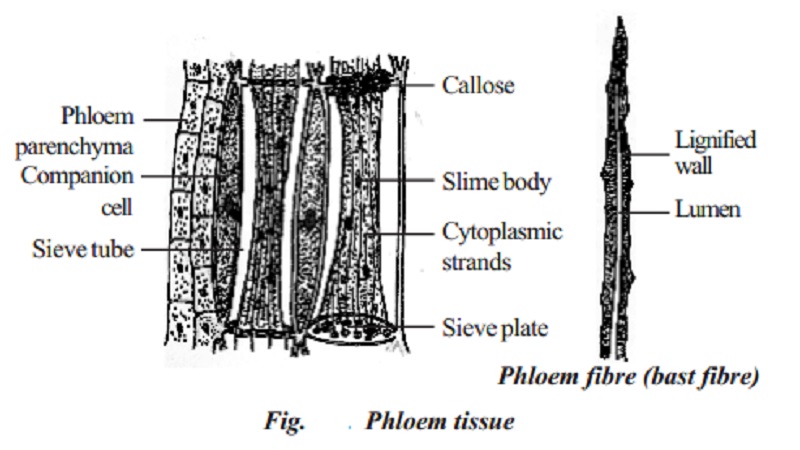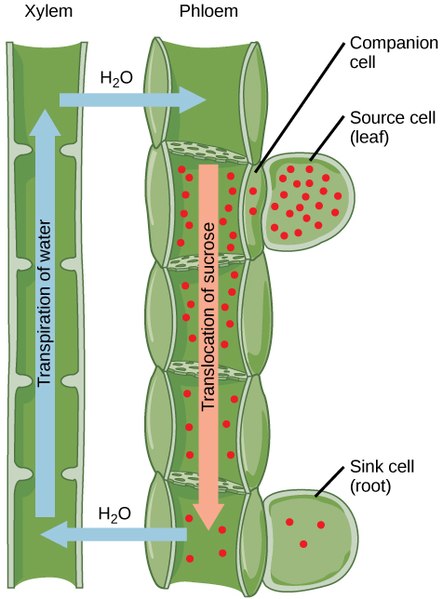A Sieve Element Does Not Contain Which of the Following
Sieve tubes and companion cells are dominantly present in this tissue. Is not an evolutionarily meaningful group.
Where Are Sieve Plates And Sieve Tubes Present In A Plant Cell Quora
It is to be noted that short sieve tube element does not always indicate an advanced condition because sieve tube element is frequently formed from cambium initial following transverse division.
. Protoderm provascular tissue and ground meristem. Sieve elements are the conducting elements of the phloem. The sieve-element plastids of members of several genera in the Buxaceae Buxus Pachysandra and Sarcococca were found to be of the specific subtype PVI which contains a central globular protein crystal.
At the endodermis water has to enter the symplast pathway. Panel 2 loaded into the sieve tube system marks an SE asterisk from where it has moved into neighboring companion cells CCs. Sieve elements are the major conducting cells in phloem.
Jekat SB et al. It is well accepted that mature enucleated sieve elements lack functional ribosomes. Froelich DR et al.
In angiosperms these cells are known as sieve tubes. A In situ imaging of a transgenic Arabidopsis root expressing the actin-binding-domain-protein tagged with cyan fluorescent protein blue. PMID 22198148 Free PMC Article.
Plant Cell 2011 Dec. The sieve tube elements do not have nucleus hence they are considered enucleated. Furthermore sieve tubes do not contain a nucleus or ribosomes while companion cells contain a nucleus and ribosomes.
Conducting cells aid in transport of molecules especially for long-distance signaling. I The sieve tube elements and companion cells are connected by pit fields present between their common longitudinal walls. Which of the following statements about sieve tube memebrs is true.
The following statements refer to the movement of water from the cortex of the root into the xylemWhich of the following statements is are true. Which of the following would be a synapomorphy that would be used to separate a monkey and a rabbit from a lizard frog and shark. In sieve tubes nucleus may be prominent in young stage of the plant but later disappears.
Up to 10 cash back Plastids have been identified in the sieve elements andor companion cells of 14 monocotyledon species. Read the following statements i The sieve tube elements class 11 biology CBSE. Companion cells have a prominent elongated nucleus which is retained throughout the life of the cell.
However they can have individually modified cells that serve as secretory cells. Sieve tube elements transport sugars over long distance through plants by acting as a channel. These cells are accompanied by companion cells forming an elegant transportation system to deliver carbohydrates and other organic compounds to the rest of the plant parts.
Sieve tubes and companion cells are two types of closely-associated cells present in the phloem of angiosperms. P-proteins in Arabidopsis are heteromeric structures involved in rapid sieve tube sealing. Vessel elements through perforations.
Sieve tubes and sieve elements are a. Homoplastic because they have different function. Sieve elements are specialized cells that are important for the function of phloem which is a highly organized tissue that transports organic compounds made during photosynthesis.
In a plant the least amount of resistance occurs as water moves between. Front Plant Sci 2013. Sieve element in vascular plants elongated living cells of the phloem the nuclei of which have fragmented and disappeared and the transverse end walls of which are pierced by sievelike groups of pores sieve plates.
In plant anatomy there are two main types of sieve. The sieve cells of gymnosperms and pteridophytes have no companion cells. They are the conduits of food mostly sugar transport from the leaves to the rest of the plant.
Mature sieve-tube members do not contain nuclei at maturity. Read the following statements. The end wall contains a number of pores and it looks like a sieve.
The development and fine structure of the sieve-element plastids in Smilax do not differ from the type found in all of the 230. Simmondsia Simmondsiaceae and Daphniphyllum Daphniphyllaceae on the other hand were found to contain S-type sieve-element. Often contain starch grains oils tannins and other secretions.
Their main function is the transport food throughout the plant. PMID 23840197 Free PMC. They have thick primary walls.
Long sieve element in secondary phloem is considered as primitive. In contrast to earlier reports plastids are present in the sieve elements of Smilax and the companion cells of Tradescantia. Lack of actin cytoskeleton in mature sieve elements SEs.
Enucleated cells mean a cell without a nucleus. A sieve tube is a prime component of the phloem tissue present in the angiosperms. Correct option is B Sieve elements are the major conducting cells in the phloem.
The sieve elements are arranged one above the other and form vertical sieve tubes. A b and c. Plants do not have secretory tissues.
Does not contain the common ancestor of a group c. However multiple ribosomal RNAs rRNAs have been detected in the phloem sap of rapeseed 20 and pumpkin 77 ribosomal protein transcripts in castor bean 78 and pumpkin 79 and some ribosomal proteins as well 780. Most of the water moves across the root cortex by the apoplast pathway.
If a plant stem has a thin cuticle the stem is more vulnerable to. Phloem ultrastructure and pressure flow. Sieve-Element-Occlusion-Related agglomerations do not affect translocation.
Ii Phloem parenchyma is made of elongated non-tapering cylindrical cells that have a scanty cytoplasm. Their end walls are transverse or oblique. So it is called a sieve plate.

Lesson Explainer Translocation In The Phloem Nagwa

10 Difference Between Sieve Tubes And Companion Cells Viva Differences
What Is The Difference Between Sieve Cells And Sieve Tubes Pediaa Com

Difference Between Sieve Cells And Sieve Tubes Compare The Difference Between Similar Terms

Plants Free Full Text Sieve Plate Pores In The Phloem And The Unknowns Of Their Formation Html

Phloem Sieve Elements Companion Cells Phloem Parenchyma Phloem Fibres

Sieve Elements An Overview Sciencedirect Topics

Sieve Element Description Phloem Types Importance Facts Britannica
Which Of The Following Is Not A Component Of Phloem Sieve Tube Companion Cell Fibre Or Sclereid Quora

What Is The Difference Between Sieve Tubes And Companion Cells Pediaa Com
![]()
Plant Tissues Vascular Atlas Of Plant And Animal Histology

Sieve Tube An Overview Sciencedirect Topics

Schematic Drawing Of Phloem Sieve Element End Wall Types Some Download Scientific Diagram

Biology Notes For A Level 41 Transport In Phloem

Where Are Sieve Plates And Sieve Tubes Present In A Plant Cell Quora




Comments
Post a Comment